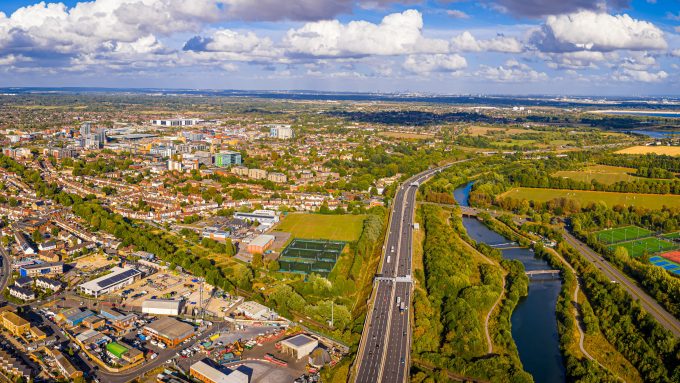
Future-proofing our train stations

They connect cities and places. Buses, tubes, tramways, passengers and pedestrians all converge towards them turning them into hubs of mobility. Stations are permanent structures at the core of the mobility shift we are currently experiencing. Railway innovations mainly have had an impact on the design of public spaces or infrastructure expenditures. There has been much less focus on the customer’s well-being or the improvement of their experience. One example would be Future Proofing Car Parks at railway stations with EV charging points. However, this trend is about to change as the government has just announced a record £48 billion investment to modernise England and Wales’ rail network between 2019 and 2024. Rail Minister, Andrew Jones MP, said: “By improving trains, tracks and stations right across the country, we will deliver more reliable, frequent and comfortable journeys for passengers and better connect our communities.”
It is crucial to forecast the evolution of mobility so we can future proof stations for tomorrow’s transportation needs, as well as those we can’t quite imagine yet. As we enter a new era of urban mobility, rail franchise companies like South Western Rail, Greater Anglia and ScotRail have pledged to invest millions as part of their innovation strategies to improve the railway station experience.
In order to shape the way people move in, around and between cities in the future, we’re encouraging co-innovation and supporting the creation of station testbeds which put the user at the heart of any proposed digital transformation and deployment process.
Buy why is it essential to ensure our train stations are fit for the future?
Ageing Victorian stations
UK train stations haven’t changed much over the past century. Many stations date from the Victorian era and were designed for able-bodied, healthy travellers, with now outdated user considerations – both in terms of convenience, comfort and accessibility – in mind. They are not adapted to the 21st-century challenges and requirements. Nowadays, travellers tend to be tech-savvy and hyper-connected. They are eager to optimise their time spent in transit. There is an expectation for easily accessible high-speed, secure broadband services that ensure time spent on journeys is ‘productive’.
There are 2,553 passenger rail stations on the Network Rail network. Although London is a major hub (London Waterloo is the busiest train station in the UK with 99.4 million arrivals and departures made by passengers in 2016/2017), medium-sized cities like Birmingham, Leeds, Manchester, Glasgow, Bristol and Reading are becoming major interchanges for many cross-country journeys outside of the capital.

Some railway innovations could be the use of 5G and open-data enabled services could help better provide customers with real-time information about their chosen transport. Artificial Intelligence (AI) can help personalise a customer’s itinerary and ticketing options. Push targeted services or options can customise user needs, whether they are moving on two feet or require specific assistance due to a disability or impairment. Digital technology can help users navigate the station seamlessly without causing disruption even integrating with an array of new mobility choices (eg, ride-hailing, car-sharing or other active mobility options should be easily discoverable outside the station).
In a nutshell, digital technologies can help reorganise and simplify the way we use train stations.
Overcoming bad perceptions
The privatisation of British Rail has long been synonymous with disappointment and has damaged the reputation of the UK’s rail systems which are often seen as expensive and timeworn. There are currently 18 rail franchises in England, Scotland and Wales. Contracts run on average between seven to ten years. Northern Ireland’s rail system has remained nationalised since 1948. The train operating companies are not responsible for track maintenance, which falls to the publicly-owned Network Rail.
The impact of the privatisation of British Rail in the 1990s has been the subject of much debate ever since. However, some facts need to be considered:
- Passengers have more than doubled since privatisation and fare costs remain higher than they were under British Rail.
- Although safer, the public image of rail travel was has been damaged by a few prominent accidents in recent memory.
- The railway network has been severely disrupted by wide-reaching strikes, affecting all rail franchises over the past few years due to the controversy surrounding the planned introduction of driver-only operations.
- According to the Office of Rail and Road, as of 2016, there was 62% support from the public for public ownership of train-operating companies.
Overcoming years of negative sentiment towards our railways requires us to radically disrupt the current perception of train travel and rethink the experience we want to have as passengers in the future.
Calls for a healthier commute
In the UK, commuters travelling into London will spend on average £305-a-month and 2.5 hours commuting each day. This can cause low lifestyle satisfaction, poor physical and mental health at a time when over 50% of UK adults already feel stressed on a daily basis. Some research has even suggested that the daily pressures on people’s finances, time and mental health has led to an increase in the divorce rate. Our cities are growing, and, despite train stations being the heart of the city, they are becoming hostile locations.
There’s a growing interest in using neuroscience for better placemaking and redesigning public spaces to ensure inclusivity and well-being. Stations could become bastions for wellness if they incorporated services like: before and after work gyms; pick-up points for fresh produce and grocery outlets; and access nodes for family GPs and other medical services. They can become restful places for taking power naps, doing yoga and encouraging relaxing areas before or after a stressful day.
It’s time to see services associated with train stations as more than just retail shops and restaurants and start adding elements of value-rich, wellness-promoting alternatives.

Changing the way we use train stations
Bringing about a better user experience in UK railway stations through digital transformation is becoming an urgent priority. This implementation will, in turn, trigger economic growth and have a positive impact on general well-being.
How can the latest relevant technologies be applied to train stations and what value-driven services can make them smarter, healthier and more efficient? Experimenting with technology and innovation such as AI, 5G, drones and VR/AR, as well as integrating neuroscience within trials can profoundly change the way we use and experience railway stations in the coming years.
Other countries are already experimenting with the digital transformation of train stations. Last year, SNCF Gares & Connexion (a French company reinventing train station experiences) launched an initiative to turn Paris Gare de l’Est into a mobility hub and collaborated with start-ups and industry partners to trial new services and better embed mobility as a service into the building. In China, Huawei is launching the world’s first 5G rail station in Shanghai Hongqiao in September 2019. Passengers will access data much faster (eg, they will be able to download a film in less than 20 seconds) and get access to a new range of innovative services, and even interact with station-based robots.
Collaboration for positive change
This type of collaboration and open-innovation are the best ways to spark positive changes in antiquated systems. Connected Places Catapult aims to build a community of active innovation stakeholders from the whole value chain and to mobilise them in ‘Future of Stations’ testbeds, deploying solutions with the rail companies and relevant organisations, including our RailWatch programme.
Putting the human at the centre of innovation is critical to ensure market uptake and impactful results. The results of these experiments will lead to the co-creation of new services and business models that will make those solutions scalable, replicable and sustainable in the UK and beyond.
Together, by using the latest digital technologies, we can improve the experience of all travellers in UK rail stations, contribute to making their daily commute better, smoother and less stressful by taking into account their needs and expectations.
The UK has both the means and the ambition to lead in railway innovations and can transform these stations into destinations and drivers for growth.
If you’re interested in working on our Future of Stations testbeds, get in touch with Nadia Echchihab.





